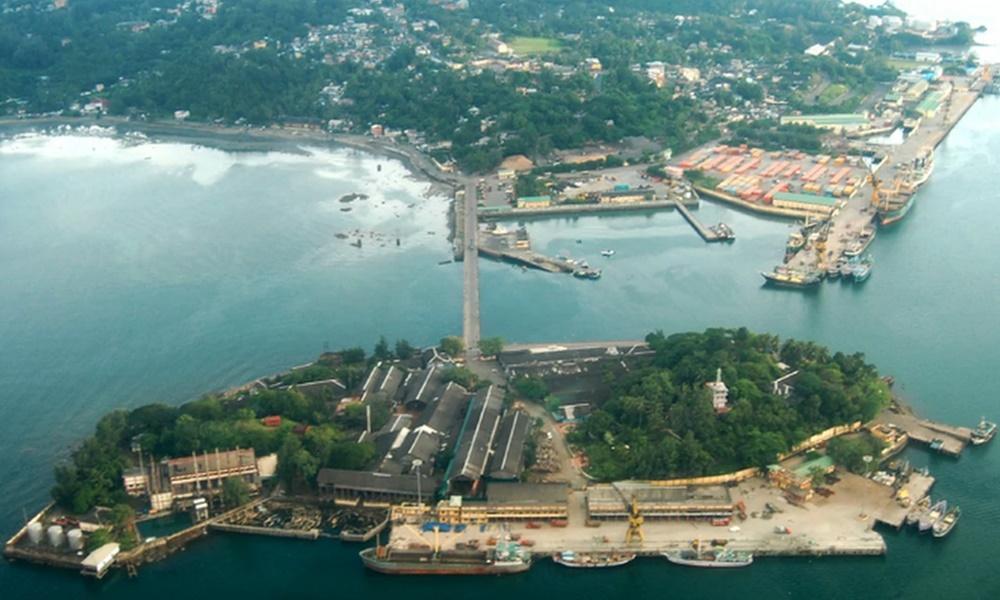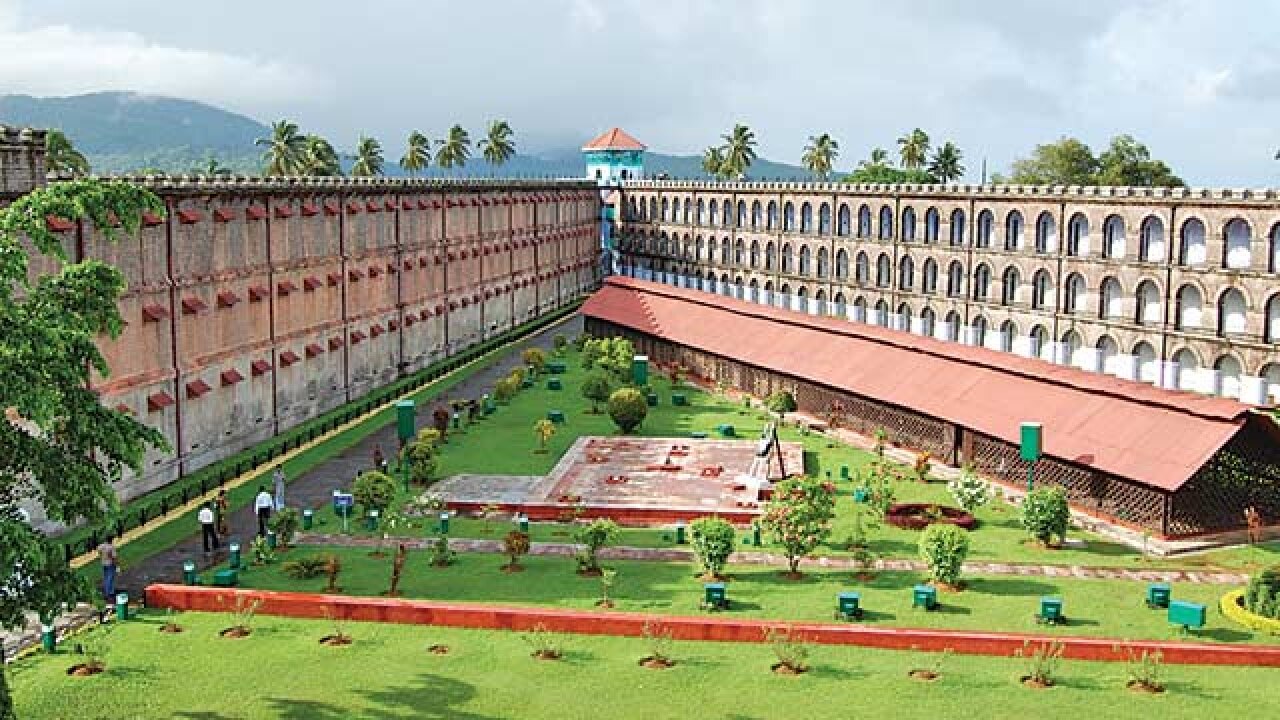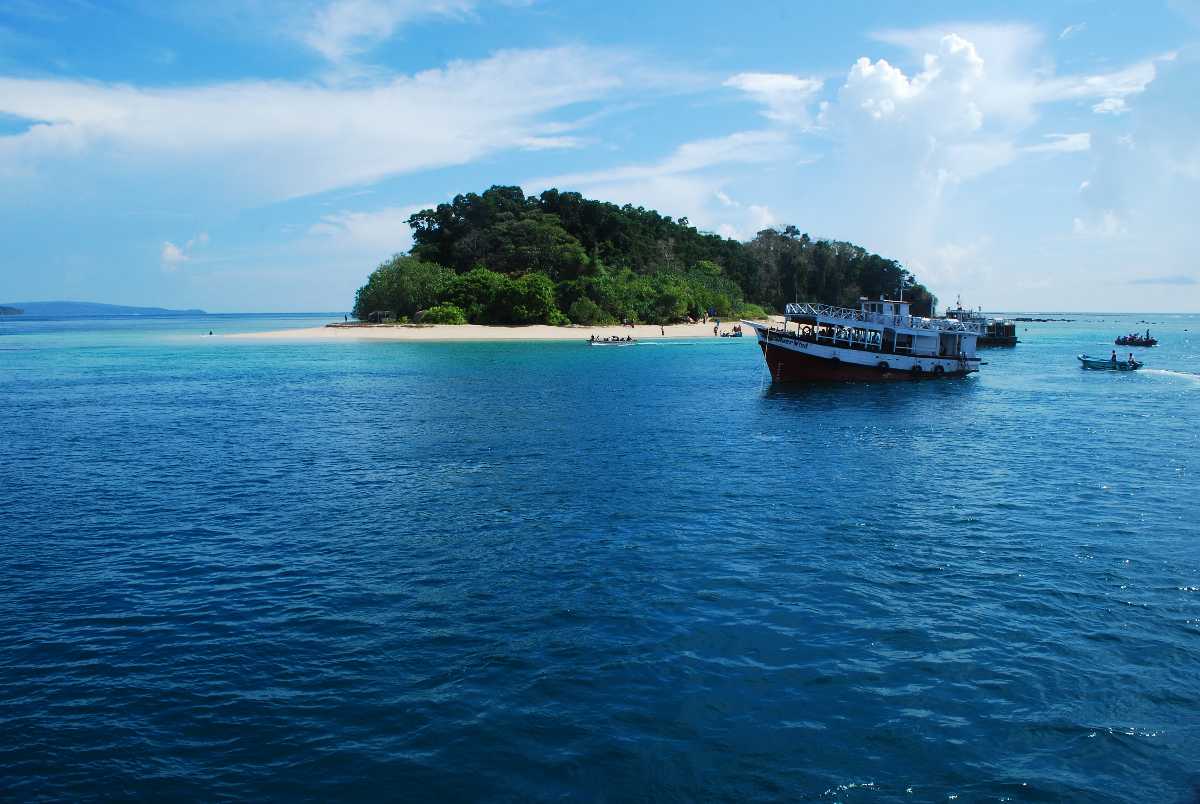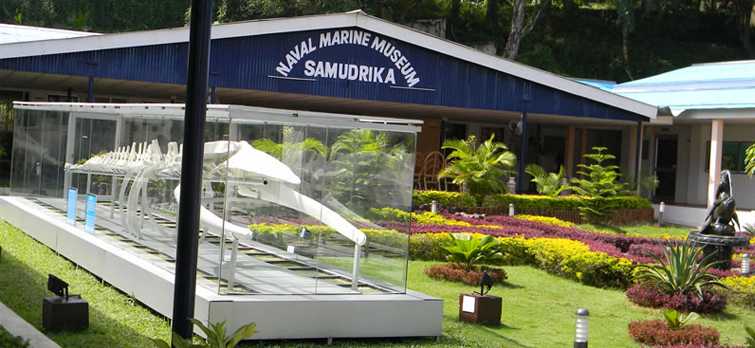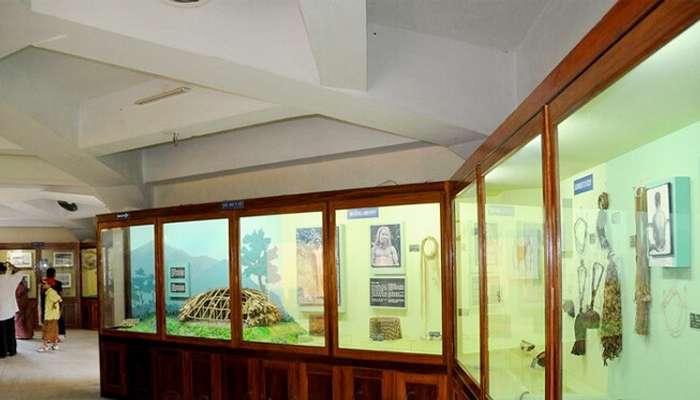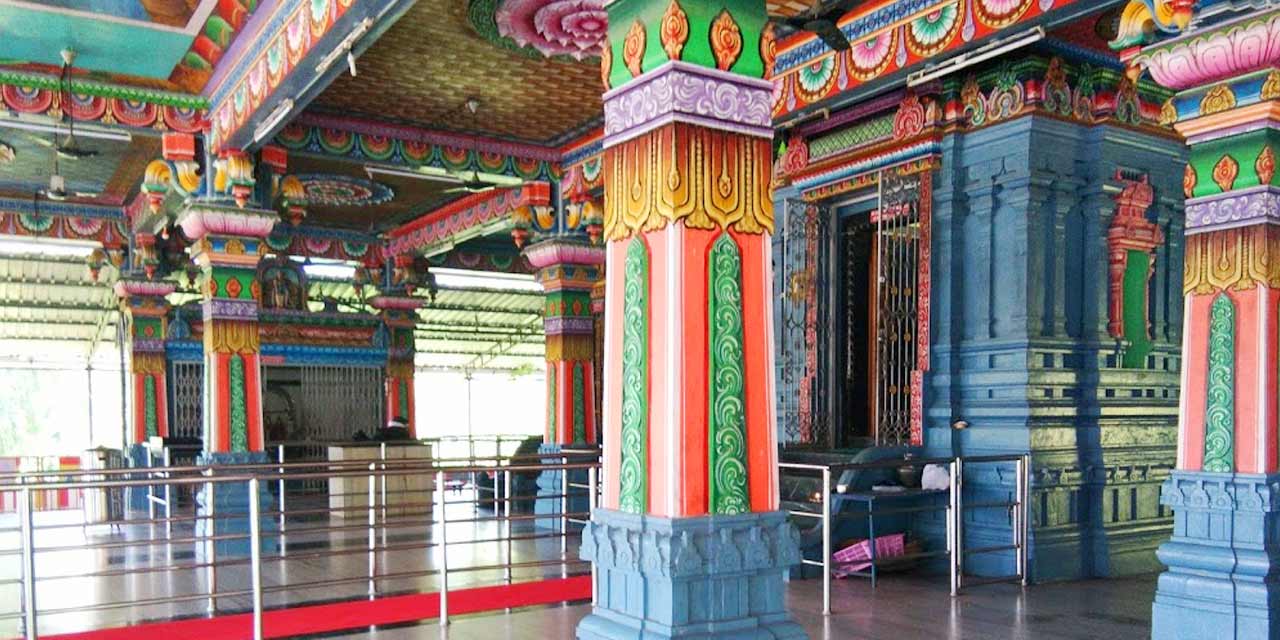Starting from Port Blair, we will explore the Union Territory of Andaman & Nicobar Islands. Port Blair is the capital city of the Andaman and Nicobar Islands, as well as the local administrative sub-division or tehsil of the islands, the headquarters for the district of South Andaman, and the territory’s only notified town. The city serves as the entry point for visiting the Andaman and Nicobar Islands and is connected with mainland India by both air and sea. It is a 2-3 hour flight from mainland India to Port Blair’s Veer Savarkar International Airport, and 3–4 days by sea to reach Kolkata, Chennai or Visakhapatnam from Haddo Wharf in Port Blair. It is home to several museums and a major naval base INS Jarawa of the Indian Navy, along with sea and air bases of the Indian Coast Guard, Andaman and Nicobar Police, Andaman and Nicobar Command, the first integrated tri-command of the Indian Armed Forces and the Indian Air Force.
Since their migration out of North Africa 60,000 years ago, Andaman tribes have lived in close-knit communities. Genome studies prove that the Andamane tribes split from the tree of human evolution of their out of Africa ancestors 30,000 years ago, and radiocarbon dating studies of the kitchen refuse dumps from the mounds excavated by the Anthropological Survey of India at Choladari near Port Blair provide another proof that the Andaman tribes have been living here for at least 2,000 years. In 1789 the Government of Bengal established a penal colony on Chatham Island in the southeast bay of Great Andaman, named Port Blair in the honour of Archibald Blair of the East India Company. After two years, the colony moved to the northeast part of Great Andaman and was named Port Cornwallis after Admiral William Cornwallis. However, there was much disease and death in the penal colony that the government ceased operating it in May 1796.
In 1824 Port Cornwallis was the rendezvous of the fleet carrying the army to the First Anglo-Burmese War. In the 1830s and 1840s, shipwrecked crews who landed on the Andamans were often attacked and killed by the natives, alarming the British government. In 1855, the government proposed another settlement on the islands, including a convict establishment, but the Indian Rebellion forced a delay in its construction. Since the rebellion provided the British with a lot of new prisoners, it made the new Andaman settlement and prison an urgent necessity. Construction began in November 1857 at the renovated Port Blair, avoiding the vicinity of a salt swamp which seemed to have been the source of many of the old colony’s problems. The penal colony was originally on Viper Island. The convicts, mostly political prisoners, suffered life imprisonment at hard labour under cruel and degrading conditions. Many were hanged, while others died of disease and starvation. Between 1864 and 1867 a penal establishment was also built with convict labour on the northern side of Ross Island which lie in ruins today.
As the Indian freedom movement continued to grow in the late 19th century, the enormous Cellular Jail was constructed between 1896 and 1906 to house Indian convicts, mostly political prisoners, in solitary confinement. The Cellular Jail is also known as Kala Pani in Hindi, which translates to Black Waters, a name given to it due to the torture and general ill-treatment towards its Indian convicts. During World War II the islands were occupied by the Japanese on 23 March 1942 without opposition from the garrison and the British forces returned to the islands in October 1945. From 1943–44 during World War II, Port Blair served as the headquarters of the Azad Hind government under Subhas Chandra Bose.
Although affected by the 2004 Indian Ocean earthquake and tsunami, Port Blair survived sufficiently to act as a base for relief efforts in the islands.
So what can we see while we base ourselves out of Port Blair?
Cellular Jail: Cellular Jail is one of the most historically significant monuments in the Andaman Islands, as it used to be the place where Britisher officers used to send prisoners for exile, during the period of their rule. The walls of this jail hold many stories of the brave Indian freedom fighters and prisoners who have withstood torment in the cells of this very building. The jail is also referred to as Kala Pani, meaning black water in Hindi, and what was the term for prison cell confinement during that period. The construction of the jail took place the years of 1896 and 1906, however, the British officers had been using the prison as an exile for prisoners right from the period of the Sepoy mutiny, during the late 1950s. The mutiny caused the death of a large number of Indian soldiers by the hands of the British, and those who were managed to survive were sent to the islands to live the rest of their days there. This prison, in particular, was considered to be the best place to send the soldiers who protested against the British, as they were completely isolated from their homes, their families and all their loved ones. Therefore, sending the rebels here was considered the highest form of punishment as it not only received torment in the form of physical punishments and torture, but their spirit was broken as well due to the fact that they were far from everything that was familiar to them. Honoring the struggle of those fighting for India’s independence, the prison was dedicated to the nation on 11th February 1979. Today, the stories and struggles of the freedom and political fighters of our country are proudly displayed on the walls of the prison, and there is even a gallery dedicated to the photos and exhibitions of the movement of the freedom fighters. Apart from the gallery, the prison also houses a library on the first floor, which has a lot of books related to the freedom movement, and a gallery showcasing the important moments from the first war of Independence. One of the key attractions the prison is the eternal Flame of the Freedom or the Swatantrya Jyot that has been built in honor of the soldiers who have given their lives to the freedom movement. The Cellular Jail also has a light and sound show which takes place daily in the evening with shows in both English and Hindi. The show in English runs on Mondays, Wednesdays and Fridays between 8 to 9 pm while the Hindi version of the show runs on Tuesdays, Thursdays, Saturdays and Sundays for an hour each at 5:30 pm, 6:45 pm, 8:00 pm and 9:15 pm. Visitors pay around INR 30 per head, for both adults and children, and you pay an extra INR 200 for a photo camera while a video camera will cost you INR 1000 to use inside the jail. The Cellular Jail is closed on Mondays while on other days it is open from 9 am to 1 pm and then again between 2 to 5 pm.
Mahatma Gandhi Marine National Park: Tucked away from the buzzing city streets in the northwestern coast of the island, the Mahatma Gandhi Marine National Park is situated in Wandoor village which is about 29 kilometres away from the capital city of Port Blair. The wildlife sanctuary consists of a group of 12 islands which are situated in a labyrinthine shape and are home to some of the most exquisite marine life in the world including corals and resting sea turtles among other species. Established in 1983, the Marine National Park features lush mangrove cover and peaceful beaches which add to its aesthetic appeal. The park sprawls over an area of 281 square kilometres encompasses coral reefs, mangrove creek, rainforests, and lagoons with most of the islands here protected and inaccessible by the general public. The coral reefs are the highlight of the park exhibiting their glorious forms and enchanting one and all. The famous islands to visit are Jolly buoy Islands, Redskin Island, Grub Island, Rangat Island, Neil Island and Long Island. The park is open daily except on Mondays between 9 am and 3 pm and it is advisable to get prior permission from the relevant authorities before accessing the park. Entry fees to the park for an adult is INR 50 per person, while that for a child is INR 25 and foreigners pay INR 500. If you want to take a camera inside, you need to pay INR 25 per person, per camera.
Chatham Saw Mill: The oldest and largest sawmill, not just in India, but in Asia, the Chatham Saw Mill which was built in the 19th century, is the largest production of timber with raw materials being obtained from the forest of Chatham island. The museum inside the mill gives tourists an insight into the history of Chatham island and also explains the biodiversity it is blessed with. It also showcases an interesting collection of wood-work and carvings that depict the excellence of craftsmanship. The mill is open for tourists in the first half of the day that is from 8 am to 2:30 pm every day, except on Sundays and public holidays. Tourists ideally require an hour or two for a tour inside. The entry fee is INR 10 per person and INR 50 for a tour with a guide.
The Forest Museum which is located inside the Saw Mill showcases the beautiful amalgamation of art and plant life. It displays a huge collection of wooden art, carvings, and artifacts prepared by the workers of Saw Mill that altogether represent the rich flora and fauna of the region. Visitors get to see various sculptures, carvings and art pieces made of different types of wood – oak, satin, timber – all from local trees that are abundantly grown in the Andaman islands. The museum also houses a range of endangered species of plants that make sure to spellbound nature enthusiasts. Moreover, the mini zoological garden inside the same premises surely adds value to the place. The museum is open on all days, except Sundays and public holidays from 8 am to 12 noon and then again from 2:30 to 5 pm. A nominal amount of INR 2 is charged per head at the entrance of the museum, as an entry fee. However photography is not allowed inside the museum.
Samudrika Marine Museum: Run by the Indian Navy, the popular Samudrika Marine Museum is one of its kind in Port Blair showcasing different marine life forms. It has a huge collection of corals, seashells, fishes and different species of sea animals in distinct hues and sizes. The museum has been divided into five prominent sections viz. marine archaeology, history of Andaman, marine life, geographical information and the people of Andaman. A major objective of the museum is to generate awareness towards the oceanic environment and marine life. The major attraction of the museum is the skeleton of a baby blue whale that was washed ashore on the coast of Andaman & Nicobar. A tiny zoo within the museum premises boasts of a few saltwater crocodiles in Haddo of Andaman. Another speciality of the museum is its inbuilt aquarium featuring regional varieties of the sea plants and animals. The shop within the premises stocks local handicraft, bamboo craft, sea shell knick-knacks and other souvenir The entry fee for the museum is Rs.50/- for adults and Rs.20/- for children per head and cameras are charged at Rs.50. Entry is free for senior citizens and specially-abled citizens on providing a valid identity card. The museum is open every day from 9 am to 5 pm except on Mondays. It takes approximately 2-3 hours to explore the museum.
Anthropological Museum: The Anthropological Museum is an ethnographic museum detailing the lives and cultures of the various tribes that have lived in the Andaman islands. Within the museum, one has the opportunity to learn about the history of the Jarawas, the Onges, the Sentinelese, the Shompens, and the Nicobarese, making it a cultural hotspot of this region. Spread across two floors, there is a great deal of importance given to the history and ancestry of the tribal people of the island, and is a testament to the indigenous human diversity that has coexisted here for centuries. Among the highlights of this museum are an ancient Jarawa chest guard, a skull originating from the Sentinelese region, and the shamanic sculptures created by the Nicobarese. A keen observation of these exhibits helps visitors understand the beliefs, traditions, and styles of adapting to the environment used by pre-historic tribals of this attractive island nation. Other minor displays are inclusive of handicrafts, arts and crafts, tools, photographs, implements, and clothing. Displays at the museum date back to the era when the six major local tribes were prominently present here. After completing your tour through the exhibits, make it a point check out the clay displays. The museum is home to some astounding clay displays for which showcase homes, ornaments, utensils, and equipment used by these communities. The museum is open from 9 am to 4:30 pm with a lunch break where the museum is shut between 1 and 1:30 pm on all days except Mondays and public holidays. Entry fee to the museum is INR per person.
Sri Vetrimalai Murugan Temple: The biggest temple in the islands, the Sri Vetrimalai Murugan Temple is renowned for its spectacular nuances of Dravidian architecture and intricate artwork that leave one spellbound. Situated behind the Governor’s Palace, the temple is dedicated to Lord Murugan or Karthikeyan, the son of Lord Shiva. The history of the temple dates back to the time of pre-independent India and was built in 1926 in the Ross Islands by the British rulers to win the loyalty of the Tamilians. Later it was shifted to Port Blair post-independence. Thousands of tourists and pilgrims visit this temple to participate in the main festivals which are Panguni Uthram, Kanda Shasthi and Thai Poosam. The typical Dravidian architecture and paintings on the interior of the temple resemble those in the Kanda Kotta temple at Chennai, Tamil Nadu. The temple is open every day from 5 am to 12 noon and then again in the evening between 4 to 9 pm.
In the next few posts, we will discover the plethora of beaches and the different islands plus some other interesting destinations which we can find in the Andaman & Nicober Islands. Keep watching this space…


